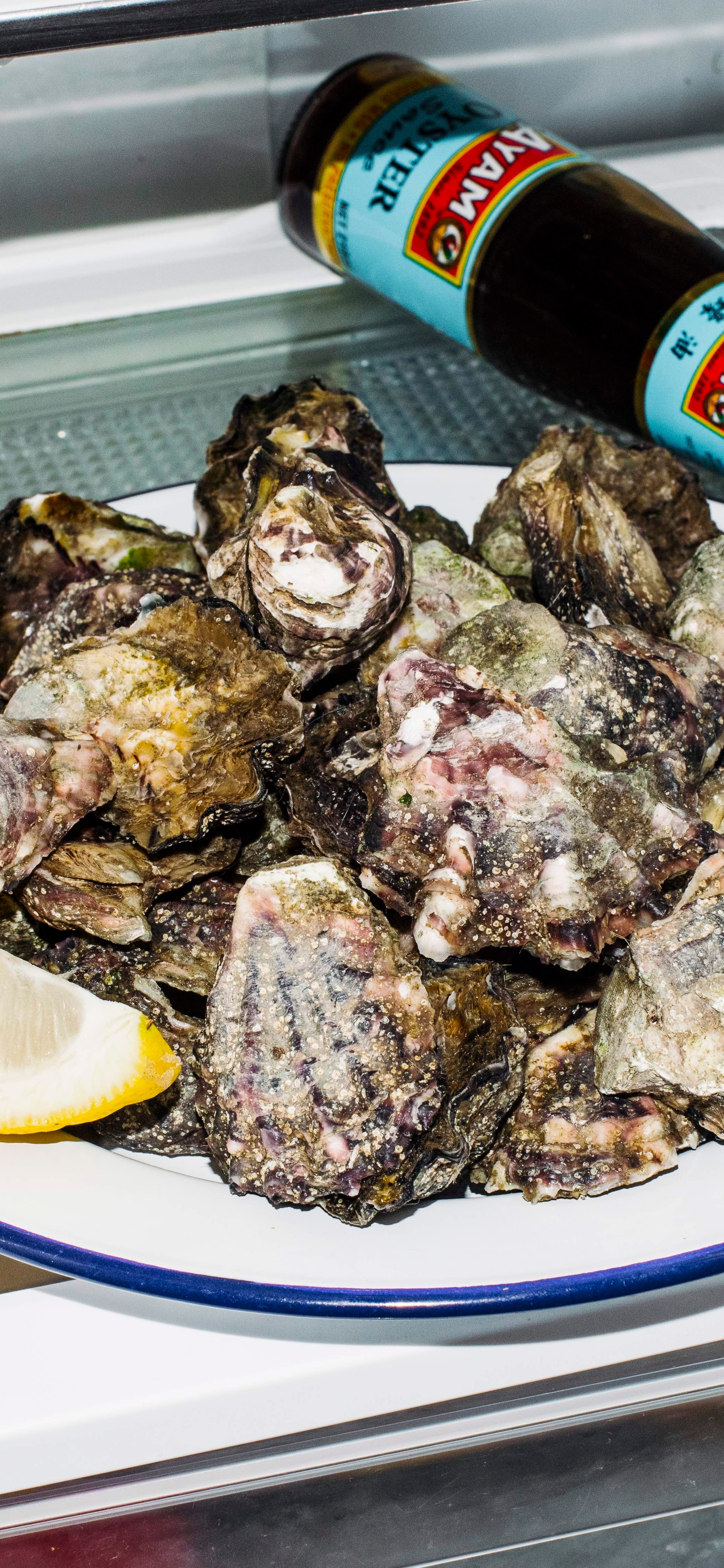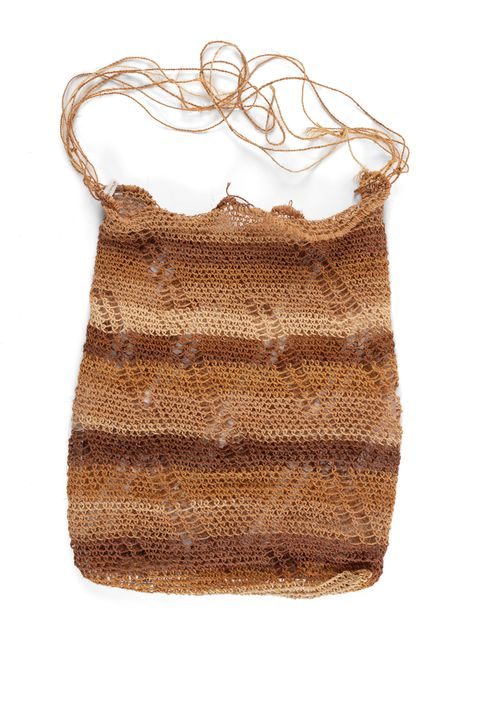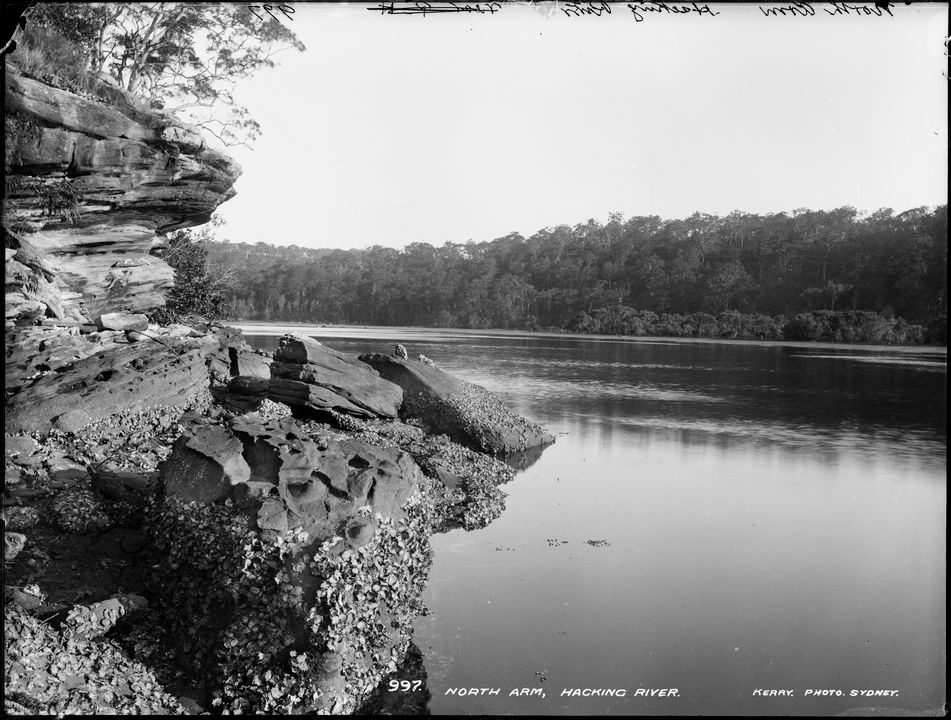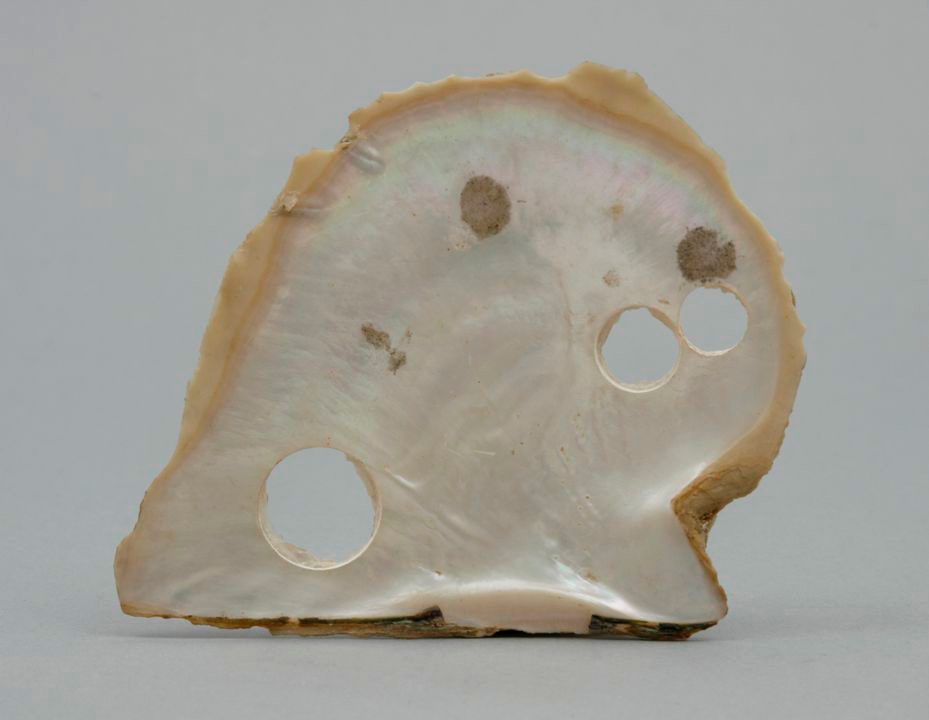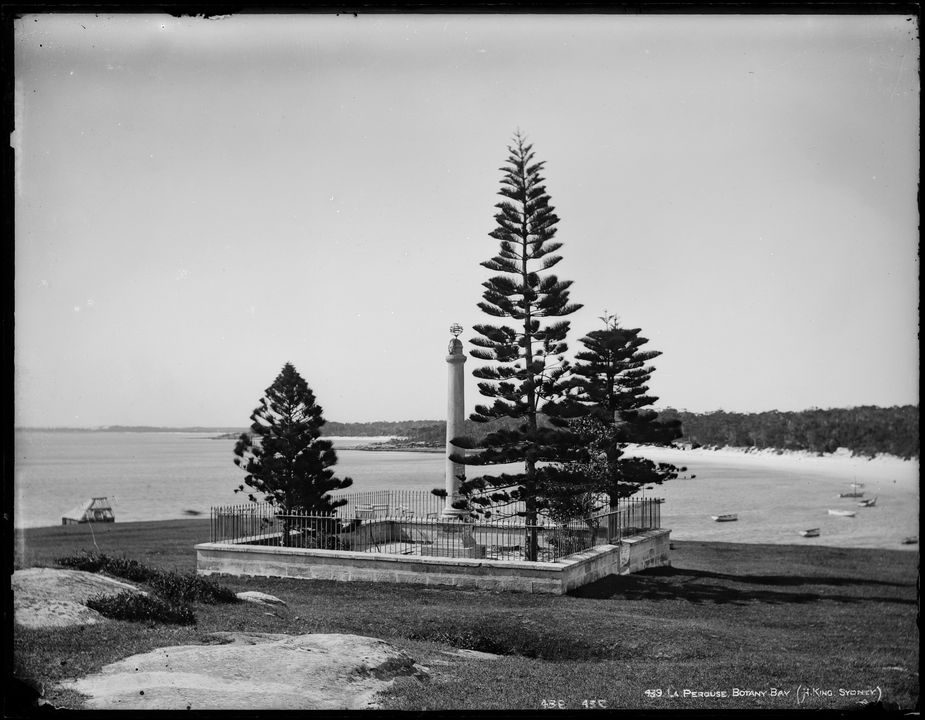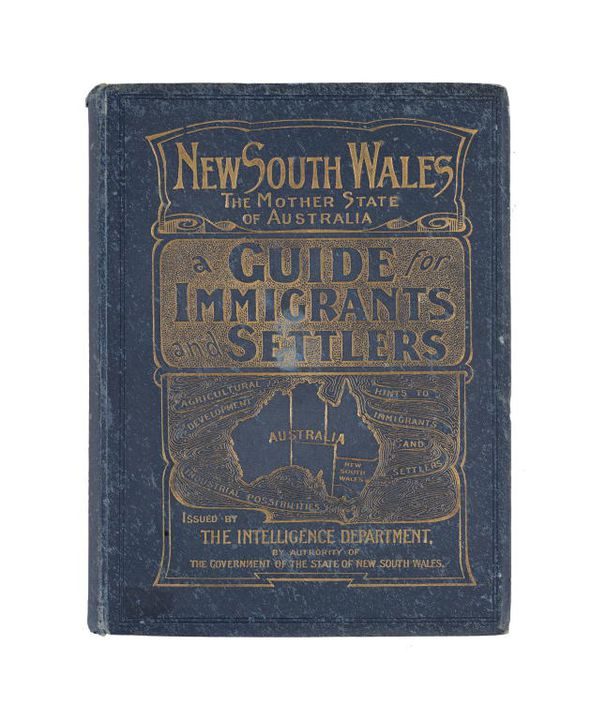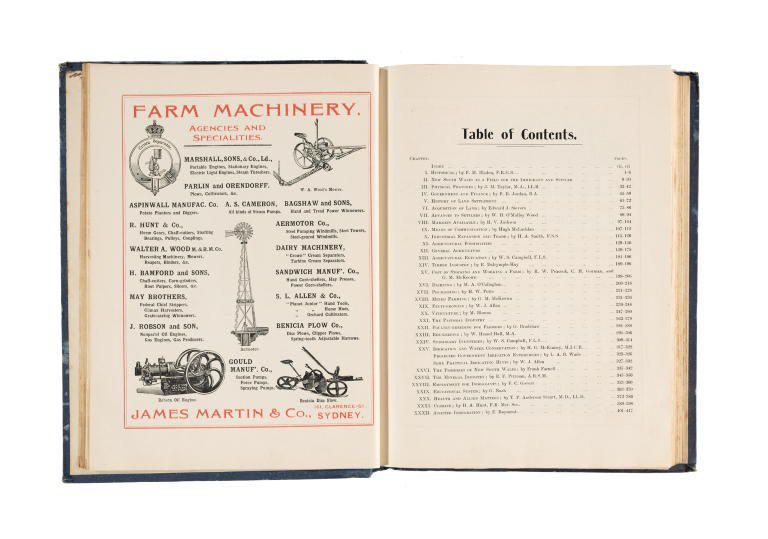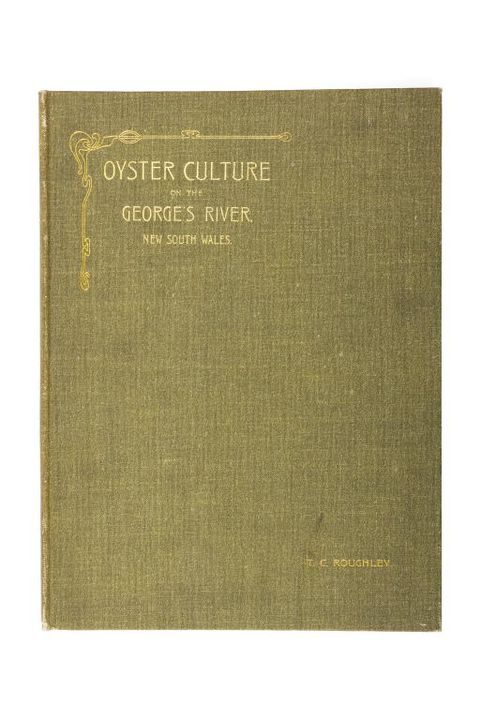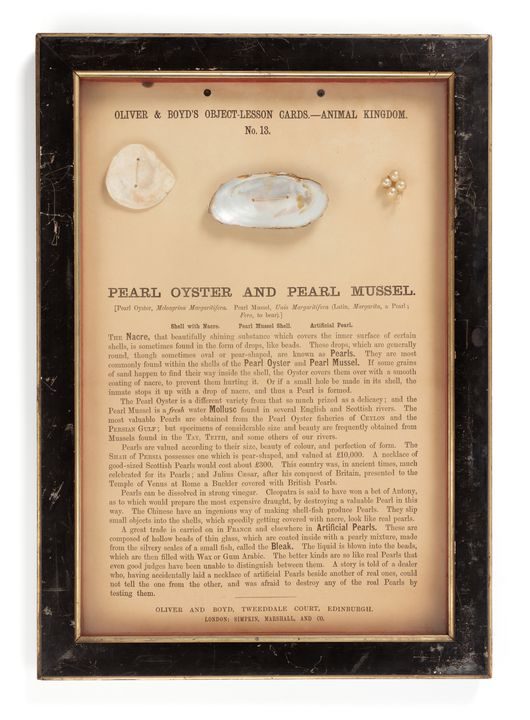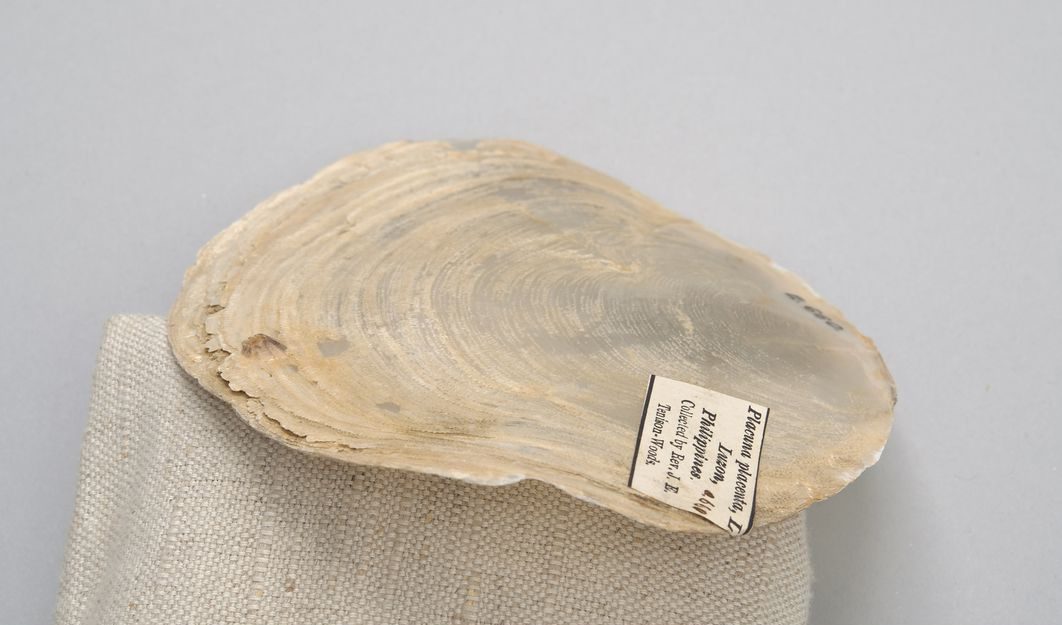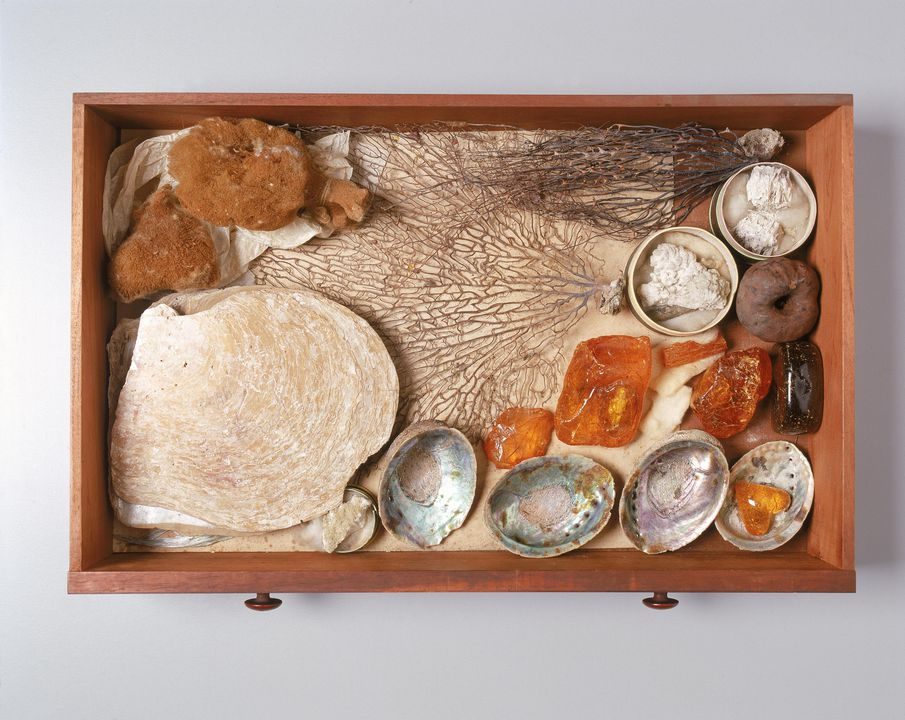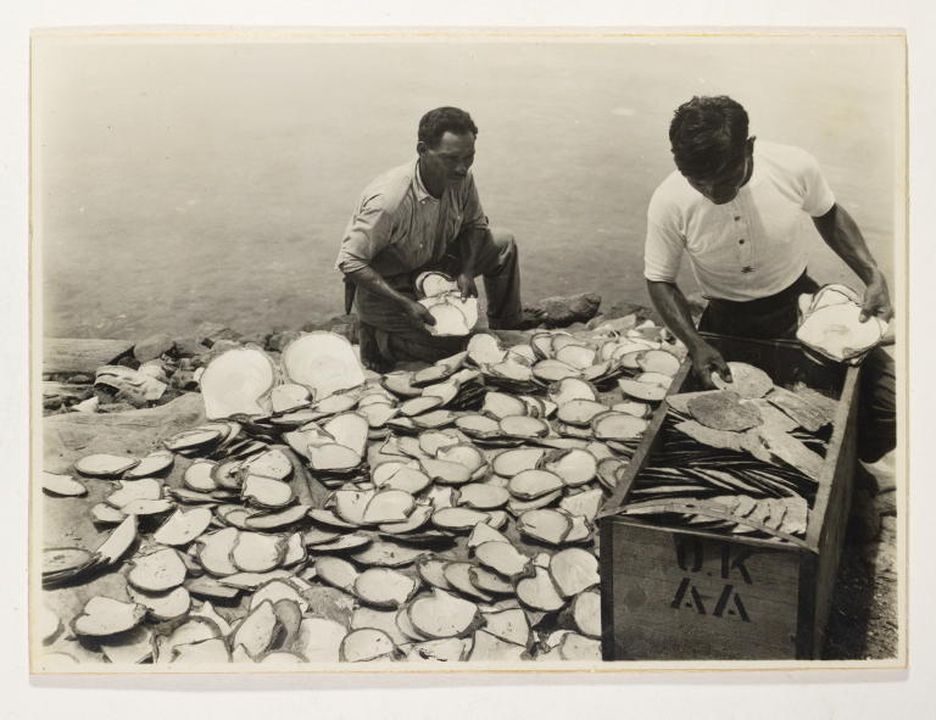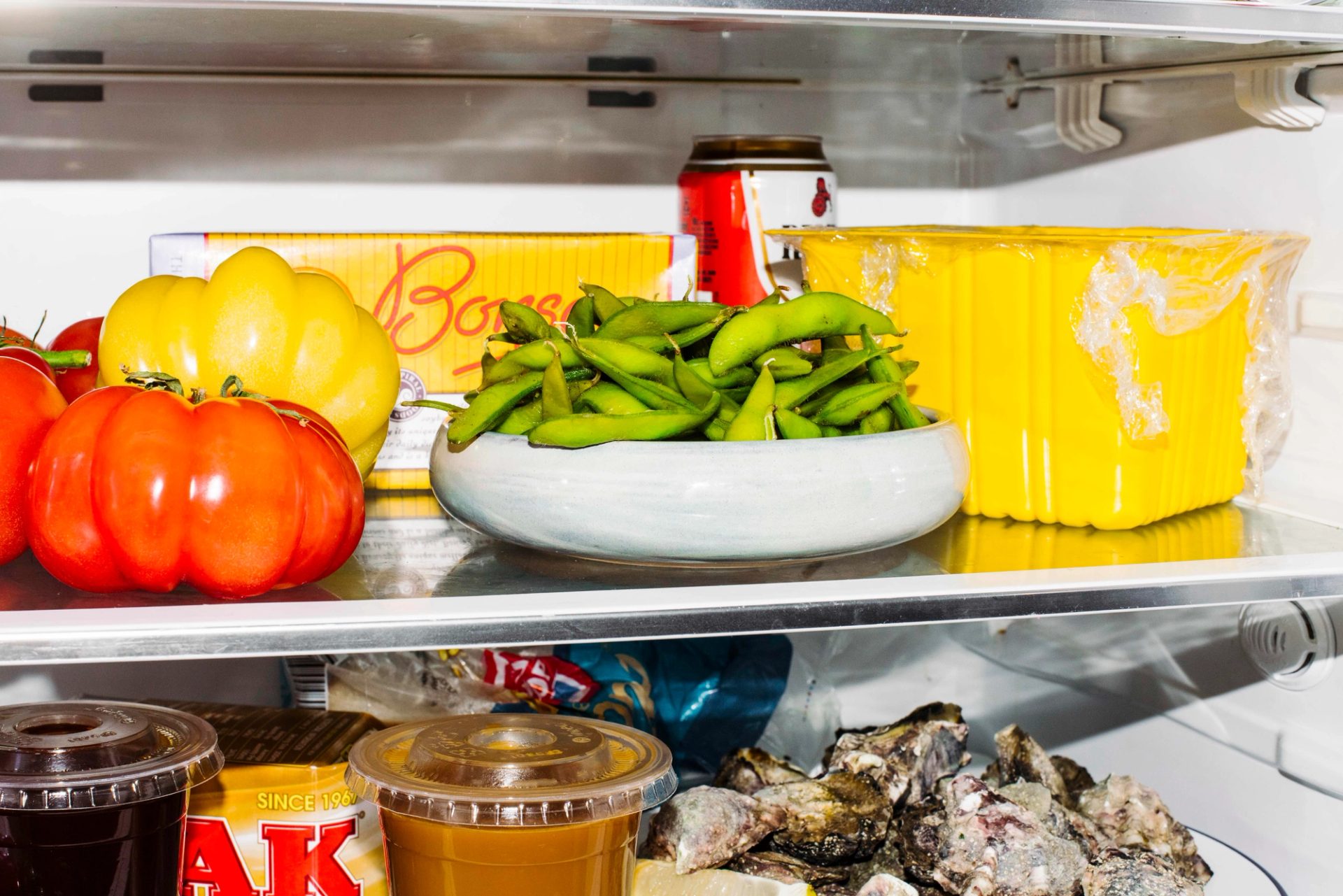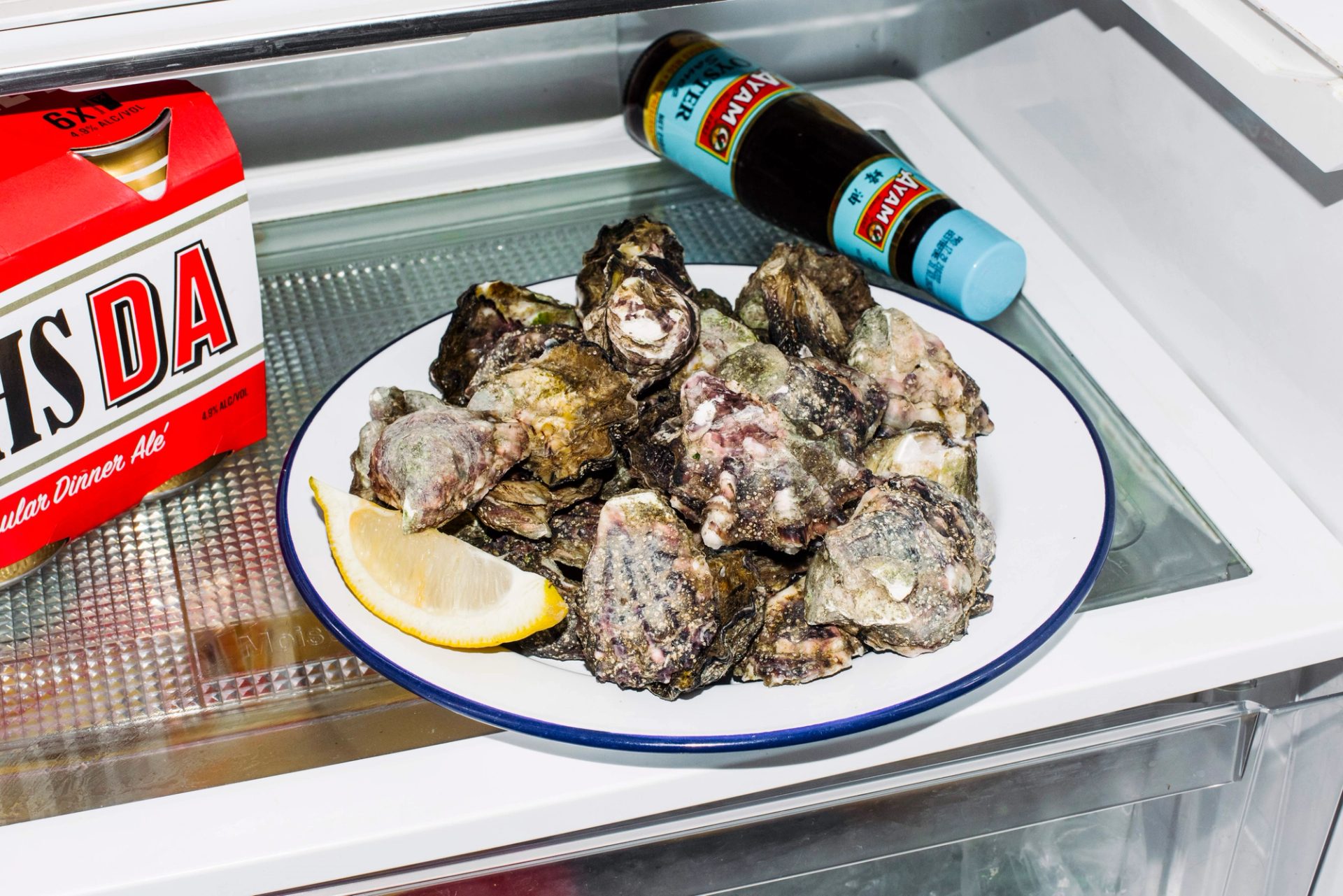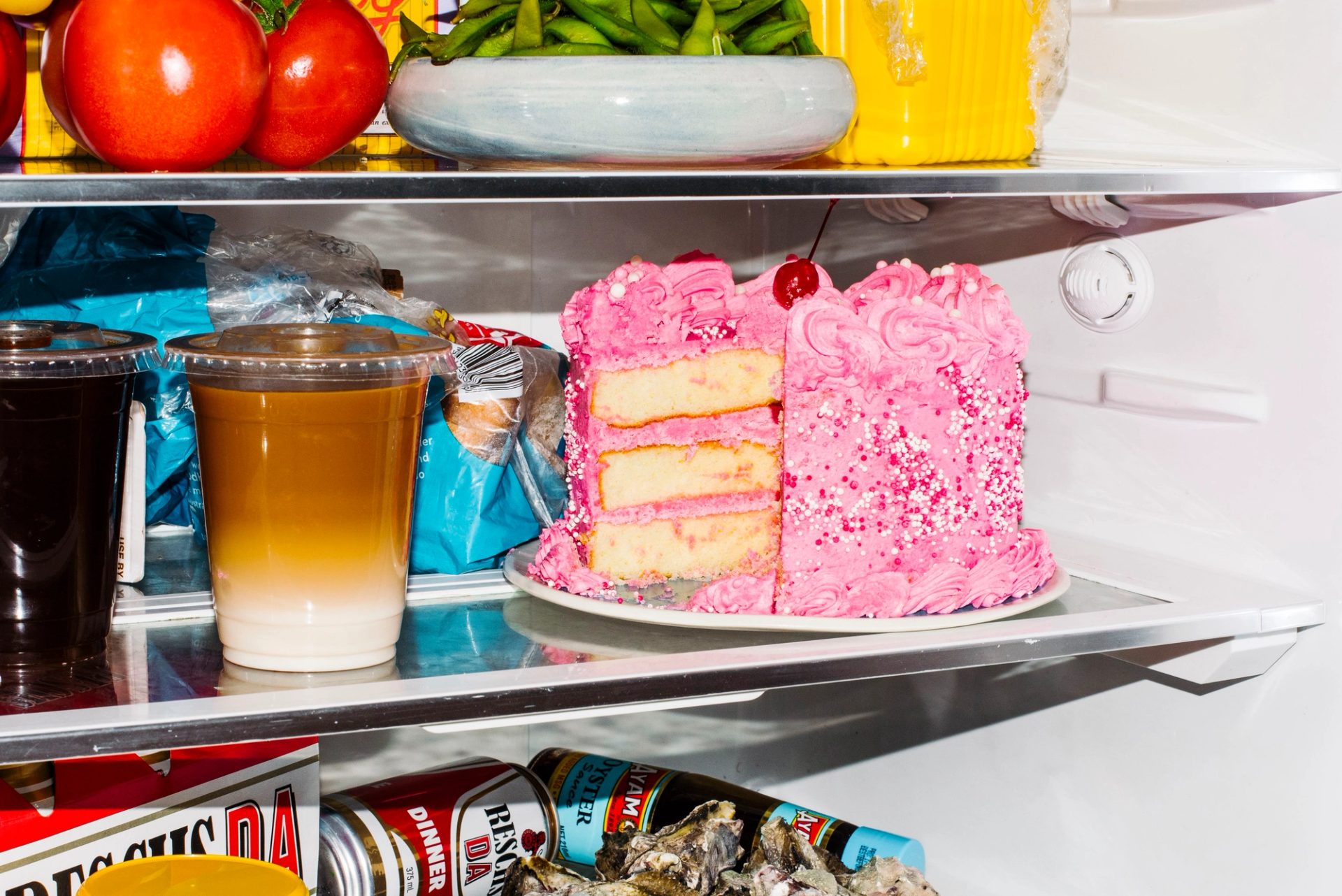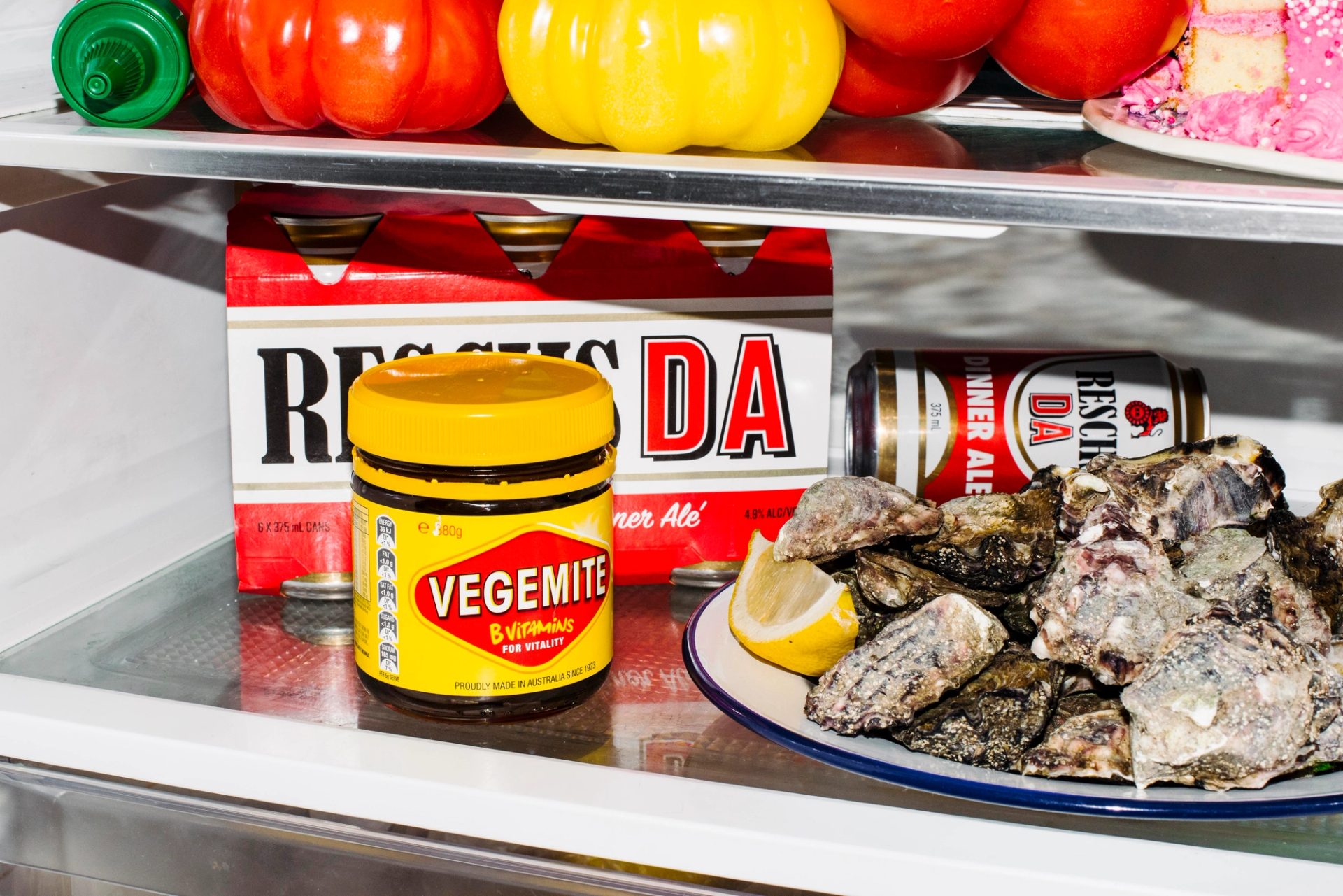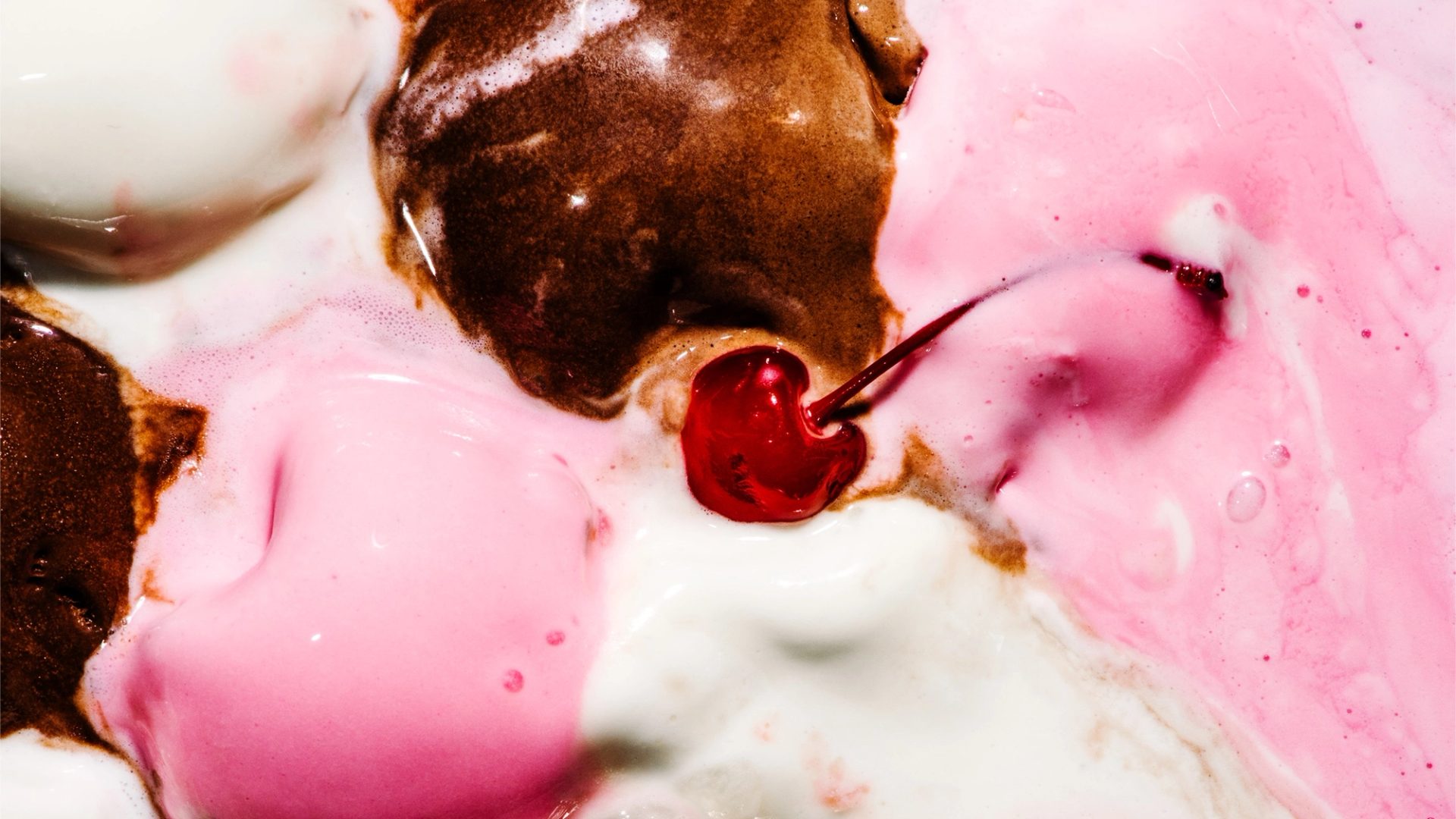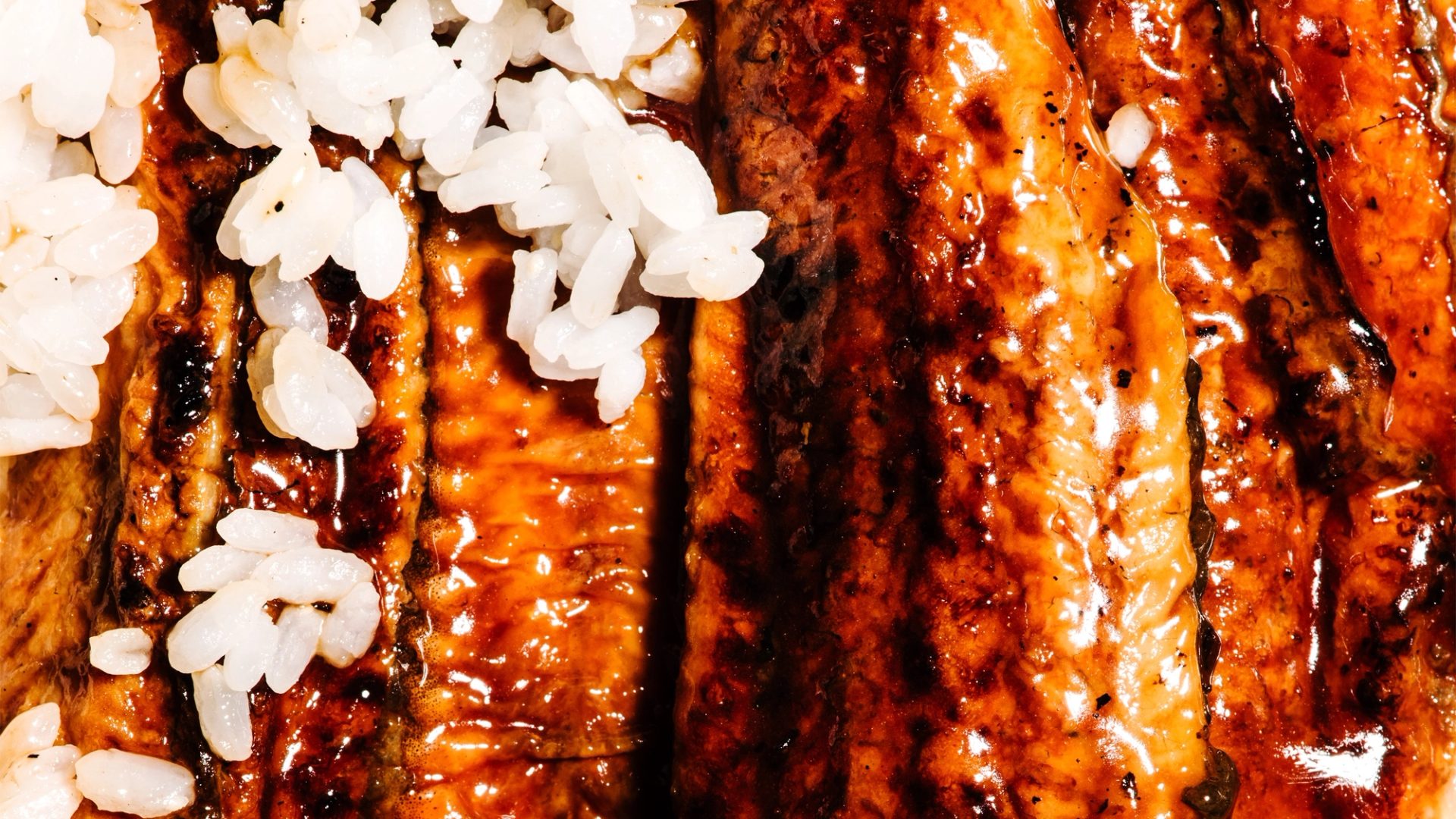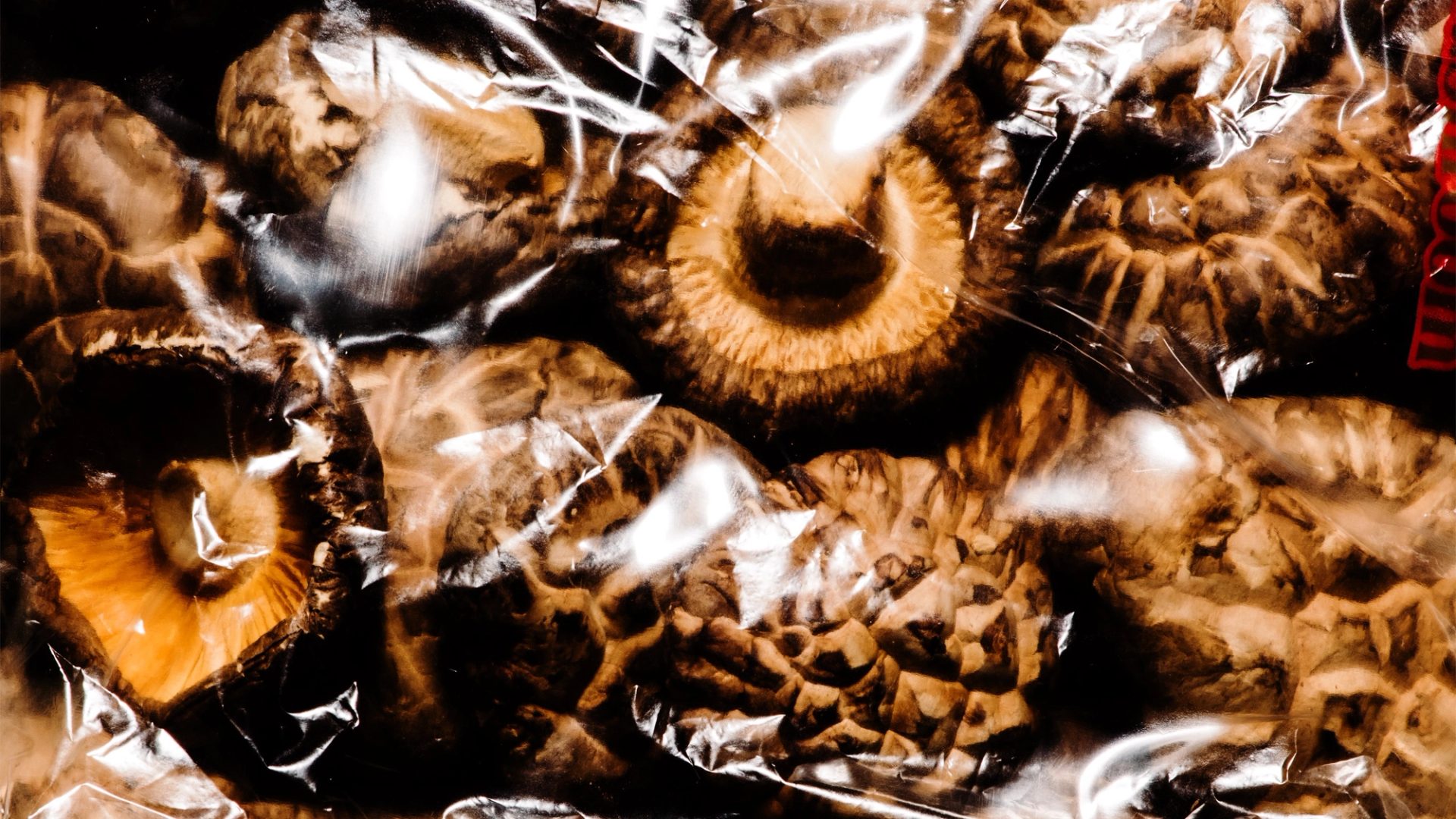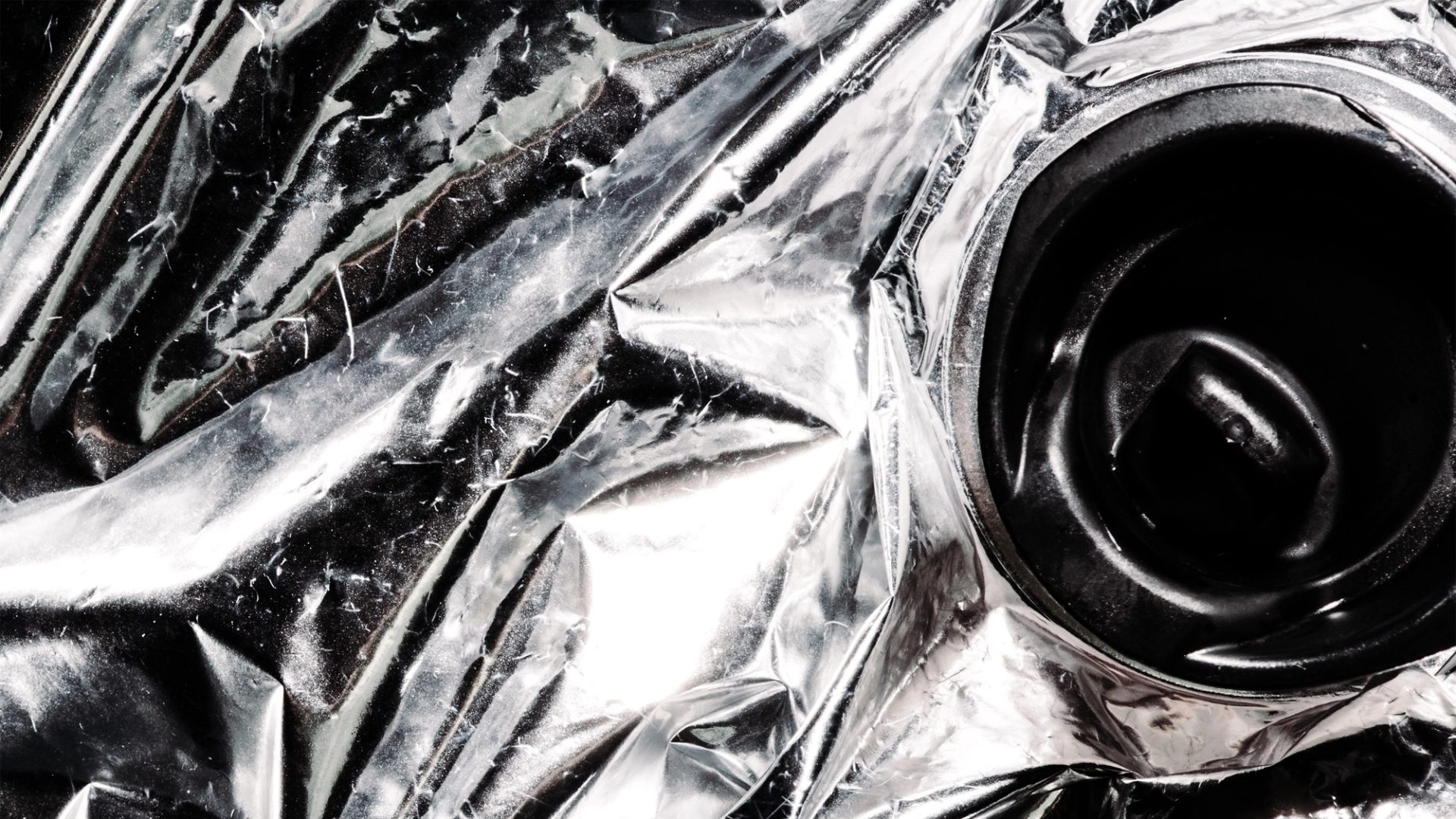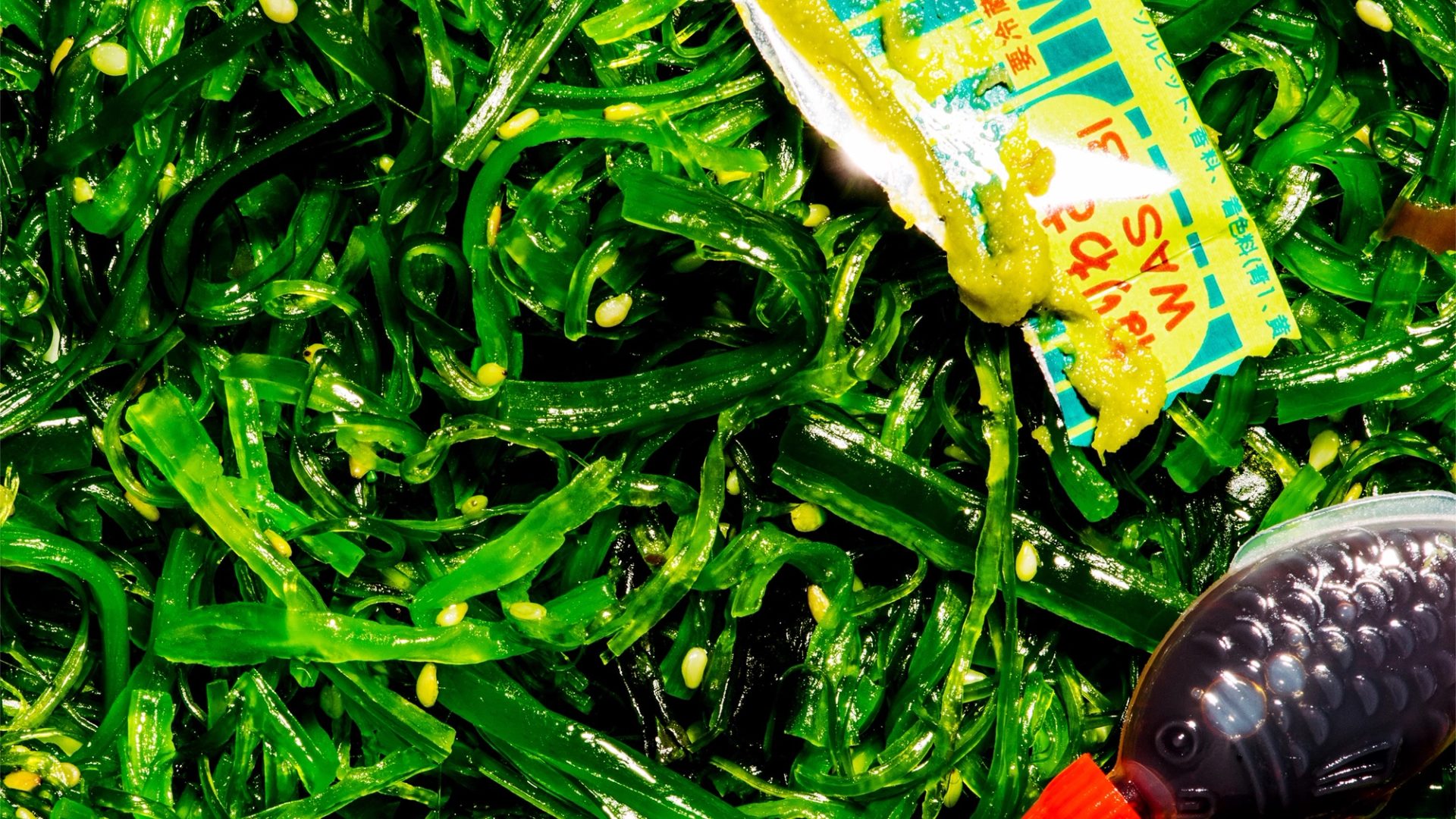Oysters

Culinary Archive Podcast
A series from the Powerhouse with food journalist Lee Tran Lam exploring Australia’s foodways: from First Nations food knowledge to new interpretations of museum collection objects, scientific innovation, migration, and the diversity of Australian food.
Oysters
Australia’s history can be told in an oyster shell. First Nations communities feasted on these molluscs and collected them in middens – a millennia old example of sustainability. Sydney was literally constructed from oysters; our roads were paved with them, and the crushed-up shells were used in buildings. Oysters tell us about past migration (thanks to oyster saloons run by Greek migrants) and our ecological future, with oysters being used to repair reef damage and revive coastlines.
‘I feel like most kids were given an oyster and they thought it was like this slimy thing.’
Transcript
Lee Tran Lam The Powerhouse acknowledges the Traditional Custodians of the ancestral homelands upon which our museums are situated. We pay respects to Elders past and present and recognise their continuous connection to Country. This episode was recorded on Gadigal, Turrbal, Yugera, Kombumerri and Wurundjeri Country.
My name is Lee Tran Lam, and you are listening to the Culinary Archive Podcast by the Powerhouse. The Powerhouse has over half a million objects in its collection; from a model of a Sydney oyster cafe from the 1880s to an oyster offered to English royalty; and a Maningrida string bag used for collecting molluscs, the collection charts our evolving connection to food.
The museum's culinary archive is the first nationwide project to collect the vital histories of people in the food industry, such as chefs, producers, writers, and restaurant owners who've helped shape Australia's taste and appetites. Today, we're talking about Oysters.
Chris Jordan I feel like most kids were given an oyster and they thought it was like, this slimy thing.
Chris Gillies A single oyster can filter up to a hundred litres of water a day; a bathtub every two days.
Jody Orcher You can still see in between the bricks, all the different layers of the oyster in there.
LTL The history of Australia can be told in an oyster shell. For thousands of years, First Nations communities feasted on these molluscs and collected them in middens – a millennia old example of sustainability. Sydney was literally constructed from oysters. Our roads were paved with them because the shellfish was so abundant, and the crushed-up shells were used in buildings. Oysters also tell a story about migration, thanks to oyster saloons run by Greek migrants, and our ecological future with oysters being used to repair reef damage and revive coastline.
CJ So, a midden, it's an ancient meeting place. So, what's left is the discarded shells and carapace of molluscs that have calcified over time and they're really – speaking to Traditional Owners and Elders – it was a place to come together and there was ceremony. It isn't just like dumping shells, it was giving it back to the earth with nutrients. Archeologists can use methods to see population density and it's really a timestamp and they exist, not only in coastal areas, they're pretty much anywhere there's water. Hi, my name's Chris Jordan. I'm a Koori man born in Maclean on Bundjalung Country. I have been a chef since I was 15, which is counting some years now. So, I run Three Little Birds, which is a catering company business in Brisbane.
JO If you think of a tree trunk and you know, you can see those different markings on the trees for the different times of the year to determine how old the trees are. So, middens provide this information for us scientifically.
My name is Jody Orcher. I'm a Ualarai Barkandji woman from Brewarrina, New South Wales. I'm an Aboriginal Studies teacher formally. I think it was about five years ago now I've got a job as the Aboriginal education coordinator with the Royal Botanic Gardens and Domain Trust.
LTL Here, she describes what local middens looked like when the First Fleet came through Sydney Harbour in 1788.
JO All around coastal Australia there is mounds which have now turned into middens, which are remains of oysters, fish, bone, any animal that was eaten or consumed in that area that remained there. Where the Opera House is now, that original name is Tubowgule, and so around there was the biggest mound of oyster shells you'd have ever seen. And so, for Warrang of Sydney, of the Gadigal people, that was one of the gathering and meeting places where they'd all come. So, you'd have the Cammeraygal people, the Gadigal people there, the Bidjigal people that are coming, the Dharawal people coming up from the South Coast, you'd have all these different people who would be using that route. If there's only one or two people, they're not gonna make much of an impact, are they? But you can tell by how big these middens were. Could you imagine the amount of people that were there?
CG A great story from up in Noosa of a geological feature, they used to call the Lions of Tewantin and it was called that because of the huge shell middens that stretched over 12 metres high. I'm Dr Chris Gillies, I'm the Ocean's program director for The Nature Conservancy and my role is to oversee a national oyster reef restoration program that stretches from Noosa in Queensland, right across to Perth in Western Australia. Oyster populations were nothing like we see today. Way back when the first European settlers passed through Southern waters of Australia, Indigenous records are our best records of shell middens, just how common these oyster reef ecosystems used to be.
LTL This isn't the only sign of how abundant oysters used to be in Australia.
CG They're really around 200 locations, right across Australia that once had these extensive oyster reef ecosystems. And indeed, there are over 60 locations that are named after the humble oyster, such as an Oyster Cove or Oyster Harbour, because they were so prolific in those areas. We had these extensive reef ecosystems occupying our estuary areas. The early explorers, like Captain Cook, highlighted in their journals as they sailed through places like Botany Bay, just how extensive and how large the oysters used to be.
LTL In fact, in those early days of settlement there was no shortage of oysters. And while the idea of 12 metre high monuments shaped from shellfish might seem surreal to us today, those towering middens existed because Traditional Owners ensured oysters thrived in large numbers.
JO So, you could just imagine all of that food there. Would've been oysters all along there and the Sydney rock oysters, like they are only little, little things now anyway, but could you imagine how big and how much abundance they all would've been? Sydney Harbour is just the biggest seafood supermarket.
CG When you think about oysters as a food resource, when you don't have refrigeration, they can live in a barrel of water and in the shade for over a month at a time. Sydney, just like many of Australia's capital cities were absolutely built on oyster shells. You can still hunt around on some of the very early buildings and look in the water and see fragments of oyster shells.
JO All those middens that was all around Sydney Harbour, they were all used for the Governor’s House. It's all-around Circular Quay. You can still see in between the bricks, all the different layers of the oyster in there, cause oysters, when it's heated up, it creates lime. So, you know, it has that concrete hardening effect on it.
CG They would crush the oyster shells as a road base. Unfortunately, not only did they mine or harvest from live oysters, but they used to excavate the Aboriginal shell middens and used to burn those in these lime kilns as well. And we have evidence of those areas. We often have also place locations called Lime Burners Bay or Lime Burners Cove. And that's where they used to burn these oyster shells.
JO They do it all over the place. And I guess if you think if you're a cementer, it’s a mix already waiting for you to mix.
LTL To meet Sydney's early demand for bricks there were shell gangs who dug up oyster shells from riverbeds. These shell gangs were usually convicts who were men of the worst character – because this work was brutal. Think hard labour often carried out waist-deep in water, your feet, getting slashed by shells as you tried to gather them. And yes, as Dr Chris Gillies and Jody Orcher point out, people plundered from Aboriginal middens for construction projects too.
The old Government House in Paramatta, the oldest surviving public building in Australia, it stands on Dharug Land and had its mortar to reinforce where shells taken from a local midden. Oysters weren't just holding our buildings together, they were thriving along Sydney coast lines and waterways too. Dr Chris Gillies uncovered many grainy black and white photos that showed just how oyster rich Australia was. Pictures of people harvesting from a field of oysters so large it overwhelmed your view, sailboats weighed down by packed bags, full of molluscs. You can see a photo over a century old in the Powerhouse collection titled North Arm Hacking River National Park, which shows rocks encrusted with such shellfish. For Dr Chris. Gillies, this archive of images conveniently mapped where oysters used to thrive, so his team could return to those exact locations and compare how things look now...even the place where Captain Cook reported seeing incredibly large oysters.
CG They were probably talking about the native flat oyster, angasi, that does get really big, gets much bigger than the Sydney Rock Oyster. George Vancouver, all the way over in Western Australia, and his men there landed on top of a reef, and it wasn't any old reef. Of course, it was an oyster reef, and he records in his diary that his men did what any normal person would do. They stopped, they built a fire, and they feasted sumptuously on oysters the size of their hands. There were oyster bars that were far more prolific in the 1800s and early 1900s than they are today. And that's because the price of an oyster was cheap. It was sort of a $3 to $4 – in today's terms – equivalent for a dozen oysters.
LTL So, what are these oyster bars he's talking about? Well, they were also known as oyster saloons, and they have quite a history.
LJ Oyster saloons first started to appear in Australia during the 1850s, and they were transferred across from Great Britain. We had the introduction of Greeks who started off on the gold fields selling food items. Greeks went towards hospitality and towards the oyster saloons, primarily because they were barred from the factory floor. They were barred from doing a lot of other work.
EA Well, the policy in itself is a crude attempt to limit the influx of foreign people into the country. It is an open manifestation of racial discrimination. And that in itself, of course, is inhuman.
‘Oyster saloons first started to appear in Australia during the 1850s, and they were transferred across from Great Britain.’
LJ We had the development of White Australia long before Federation, where it itself was institutionalised in the first immigration act. They had to take up some other occupation if they wanted to remain here. And hospitality was it. My name is Leonard Janiszewski and I'm a historian. I'm working at Macquarie University as a curator and as a researcher. And I've been working on the In Their Own Image: Greek Australians a national project and archives since the early 1980s.
EA I'm Effie Alexakis and I'm a photographer. And I've worked with Leonard Janiszewski for the last 40 years on the In Their Own Image: Greek Australians national project. Well, when we started working on this project and we realized that the Australian national and state archives libraries and museums did not really collect nor recognise things to do with people of non-English-speaking backgrounds. So, we felt like we were in a position to change that. Initially we were annoyed at the stereotypes that were being depicted. Greeks had been coming to Australia, like Leonard had said, from the gold rush period and onwards. So, we wanted to break down the myth that Greek migration was just a postwar phenomena. We focused instead on the long historical connection.
LJ For the Greeks, eating is not just simply pragmatic. It's an adventure of the social. You have to talk with people, you're inclusive, you bring in a variety of people. The original oyster saloons focused almost exclusively on oysters and alcohol, but with the diversification of their customer clientele, they also diversified their food items. They started to introduce fresh fruit, red meats and a variety of ways in which you can cook these items.
LTL If you're looking for a sign of how popular oysters and oyster saloons were, then we need to talk about the Cominos. They were known as the oyster kings for good reason. And the Cominos reign had an impact far beyond the local Greek community.
LJ John and Athanassio Comino. They were the first who saw that there was potential in these oyster saloons. The Comino name itself was synonymous with being Greek because they were the first point of call that British Australians would meet Greeks through. They would go to these oyster saloon institutions, and when they found out the name of the proprietor, it was Comino. Other Greeks who were not Cominos, who may have been Kythiran or from Mytilini and so on, would take up the Comino name because it became synonymous with public eating. ‘I'll meet you at the Greeks’ was a popular saying that was common if you wanted to meet somebody. And again, this emphasises what a social centre these oyster saloons were.
LTL Back to the Cominos, their oyster saloons had become so successful that people would refer to pretty much any Greek person as a Comino. But the Comino brothers didn't gain their reputation for being oyster kings or just from running oyster saloons. They also played a key role in freshly harvesting oysters from the waterway too.
LJ One of the beauties of the Greek involvement with oyster saloons was that they didn't simply want to provide customers with oysters, but they wanted to farm and distribute at these oysters. The Comino brothers became involved in oyster farming. The industry was not regulated, and the Cominos were importing New Zealand oysters and trying to revive them within Australian waters. They created leases on the North Coast of New South Wales and on the South Coast of New South Wales and they were growing oysters. And they became not only farmers, but also distributors. Now oysters themselves, in terms of their popularity, started to decline. Certainly, there were problems with farming. There were downturns within the industry. Some oyster saloons would start closing the changes in terms of what was the focus of eating fashion. During the early part of the 20th century, the focus was starting to go away from oysters and these oyster saloons were becoming more soda and sundae parlours.
LTL So, there's a good reason why you don't see oyster saloons or roads paved with oysters anymore. The blockbuster demand for this once abundant shellfish nearly wiped out the species here. The downfall of the oyster saloon was one sign that local mollusc numbers were in a really bad way. And as Chris Gillies delved into historical records and fading photos, he found plenty of proof to show how once healthy oyster populations and oyster reefs had majorly declined too.
CG There was commercial harvest industry for oysters, right around Australia. They would pull their boats up and essentially mow that area. Ultimately, these ecosystems collapsed. We had to look through historical newspaper reports, and then they were able to provide these little snippets of information around how many thousands of bags of oysters they used to harvest before the master decline. We also had parliamentary records and that's phenomenal when you think about it. Within 30 years of European colonisation, they've had to go all the way to the UK establish this act to prevent further harvest because they had already decimated these oyster reefs. And it's so much fun, you know, diving through these historical records, museum reports, photos to uncover this lost ecosystem that we really knew very little about just 10 years ago.
LTL You'll actually find one such record in the Powerhouse collection.
CG One of those gems was Oyster Culture of Georges River and published in the early 1900s. And it described the state of the industry in that transition from being a wild harvest oyster industry through to a managed aquaculture industry. It certainly was a critical piece of information in our historical investigation of what these ecosystems used to look like.
LTL The Aboriginal middens are important records of this loss.
JO One of the things why they're so important is because they provide us information of what was, and what is not there. Now there's a lot of information that these middens provide to us. You can determine the loss of what was there, but you can also then understand how far people had come for those species to be there. So, very important aspect for us to recognise as Aboriginal people, what our people used to eat, what may not be then any more, which is either threatened species are now extinct. So, it's really great to be able to get a picture of the past.
LTL Middens can also provide hope for the future. That's the belief that's inspired Chris Jordan's cooking. Let's hear from the chef as he talks about his evolving relationship with oysters.
CJ I feel like most kids were given an oyster and they thought it was like this slimy thing in their mouth. [laugh]. I do remember stories of my dad eating them off the rocks and really enjoying them. My love for the taste of oysters didn't develop until I was a young adult.
Archival No one has yet defined the correct way of eating an oyster because oyster eating is a highly individual art.
CJ Especially being an apprentice. I was on the raw section in Peter Kuruvita’s restaurant, Flying Fish, and my job was to open oysters. So, we had about six different types of oysters all from, you know, different places. I just remember being blown away by the different, you know, taste and textures and just what like place and temperature and, you know, the tide can do to one thing it's kind of mind blowing actually.
LTL At a certain point, oysters stopped being just another ingredient and became something more significant to Chris Jordan.
CJ I guess it was walking Country with Elders and just hearing about the importance of, you know, shellfish to many coastal mobs, walking a midden with an Elder, with Aunty Bella Douglas down in Currie Country and she was telling me about how the oysters used to be here. Being on Country with Kieron Anderson on Minjerribah and having him explain the population densities and the abundance of seasons that could be seen in the sediment with the oysters. You know, I just felt this real connection. And I guess I wanted to show that in my food. So, my personal experience is something that I really wanted to add to dinners and events when people were eating the oysters. And I think it's really important to share these stories and connect with Traditional Owners, if you're Indigenous or non-Indigenous.
LTL One way Chris Jordan has done this is through a midden-inspired event, which he had originally designed for 2021’s Bleach Festival on the Gold Coast.
CJ That was a three-course dinner part of Bleach Festival down on Burleigh beach. And the first course was the past. So, it was oysters with all these vegetables and fruits that could be found around the middens that I visited, but also like right there on Burleigh beach, it was old oyster shells and rocks with sea vegetables, like sea blight, all foraged on Country with Elders. And then we had these beautiful oysters with like pigface fruit and Warragal greens, oil and seaweed and salt bush. And then we took salt water from Country, and we poured it over dry ice that was hiding in the bottom of the shells and rocks and this kind of mist of seawater bellowed out onto the table.
LTL Chris Jordan thinks traditional knowledge could help avert damage to coast lines and the environment.
CJ The rules and regulations that are in place, the care and the respect hasn't been upheld. I think the steps to rebuild what was once here is through the footsteps of Indigenous knowledge holders and Custodians of the Land.
LTL When people place oyster shells on middens, it's not purely for decoration. It helps First Nations communities to keep track of the oysters and shellfish they've harvested, so they don't overfish anything. These shellfish middens are incredible examples of sustainability as they also feed nutrients back into the land. Dr Chris Gillies’ rebuilding of oyster reefs across Australia is one great example of how to help nature repair itself.
CG To recover these oysters, we need to do two things. We need to provide the baby oysters that float around in the water before they settle on a rock. We need to provide them with a fresh, clean surface for them to settle on. In other locations there just isn't enough oyster reproductive biomass, if you like, or enough oysters in the system to be able to reach the densities required to create a reef. So, in that case, we need to work with hatchers. We breed millions of little oysters. Often, we put them on top of recycled oyster shells that we get from restaurants, and then we place those baby oysters on top of those recycled oyster shelves. And we are rebuilding those oyster populations up to the densities that will allow them to naturally continue that process of rebuilding reefs.
Oyster reefs are really important because they're one of the few hard surfaces that you would typically find in a very sandy, silty environment. It also provides another refuge and they're fantastic fish factories. All the little critters, the crabs, the worms, the sea stars that occupy the little, tiny spaces between the oysters provide a lot of food for fish as they grow up as well. A single oyster can filter up to a hundred litres of water a day, you know, a bathtub every two days. And so, when you had literally billions more oysters in each estuary, right up down the coast, the water was much cleaner and much more healthier than what it is today.
Archival The oyster is a very delicate fish, particularly susceptible to water impurities. Continuous testing monitors the water conditions.
CG Down south, we know it's the oyster coast. It's where a lot of the oyster agriculture industry is. We know oysters have always been common there. And so, we're looking at really revitalizing that area through a slightly different project that's called a living shoreline where we're using oysters to help protect the shoreline from erosion and sea level rises, as well as using other ecosystems like mangroves and salt marshes.
LTL Let's hear from someone else who's creating artificial reefs and sea walls to help restore oyster populations too.
‘Aboriginal cultural knowledge is so important for us to recognise in today’s society for sustainable environmental health. We call it caring for Country. You allow land to restore itself.’
Alex Goad Hi, my name's Alex Goad. I'm an industrial designer, and I'm also the founder of a company, Reef Design Lab. We’re creating structure to restore habitats that you have in various kinds of marine environments.
The living sea walls concept is very simple, I mean, flat sea walls, you can imagine they heat up really quickly in the sun, they’re, I know, sort of physical hiding spots for various intertidal organisms. It's really a desert landscape for any of those species to live on. And you often just don't find any species living on flat walls at all.
What's really fantastic about the living sea walls project is everything that we've done has really been based on research on science. So, you know, we're not just coming in and sort of being like, well, we can create this really beautiful sort of parametric design that we think is really nice.
What we are doing is really looking at okay, how do we design based on the science? What are the natural geometries that you find? Whether it's water retaining features, grooves, holes, all of those kinds of things – we've taken through geometric data and created a series of different designs. And those designs have now been monitored over the last couple of years and we're gonna be using that result to inform how we will start designing the next iteration of sort of living seawalls products.
LTL So how exactly does Alex Goad and his team do this work with 3D printers?
AG There’s this myth that 3D printing is like, super high tech and complicated. I mean, it's really accessible now in our studio, we print out all of our designs and then create moulds, which makes it really economical to replicate the living sea wall panels in various kinds of eco-concrete mixes, using various kinds of recycled materials: recycled, oyster shells, recycled aggregate, that sort of thing. What's so cool about, I guess, digital fabrication these days, we can do a design in Australia, and it can be printed and deployed overseas. There's a lot of restoration projects going on around the world and it's just, that's really what gives me hope, is seeing if you give sort of, you know, nature, an opportunity to come back, it really has such amazing potential to restore itself.
LTL From Noosa River in Queensland, down to the Sapphire Coast in New South Wales and around the aptly named Oyster Harbour in Western Australia, you can follow the different rebuilding projects that Dr Chris Gillies has overseen with The Nature Conservancy. Perhaps you'll notice the 251 tonnes of shells they've recycled in the past year to create new homes for oysters and other sea creatures. Only 10 per cent of Australia's original shellfish reefs remain, but Dr Chris is extremely optimistic about what can be achieved with this program. And what Alex Goad and Reef Design Lab are doing with 3D printed marine environments and living sea walls is having an effect underwater, not only here, but around the world. Maybe we won't see 12 metre high middens constructed from oyster shells anytime soon, but Jody Orcher's message of taking care of Country is something worth listening to as Australia faces increasing threats to its climate. And I'm inspired by what chef Chris Jordan is doing with his cooking to show that oysters and middens and Indigenous knowledge are worth considering when talking about how to over environmental damage. And I loved learning about the history of oyster saloons through Leonard Janiszewski and Effy Alexakis work; how these venues changed the Australian culinary landscape and the Greek oyster kings who became household names as a result of this. So maybe oysters are much more than slimy things after all.
This episode was inspired by items from the Powerhouse collection, such as the Oyster Culture on the Georges River book, by TC Roughly, which was published in 1922, and the North Arm Hacking River National Park photo by Kerry and Co from the Tyrell Collection, mentioned during this episode.









